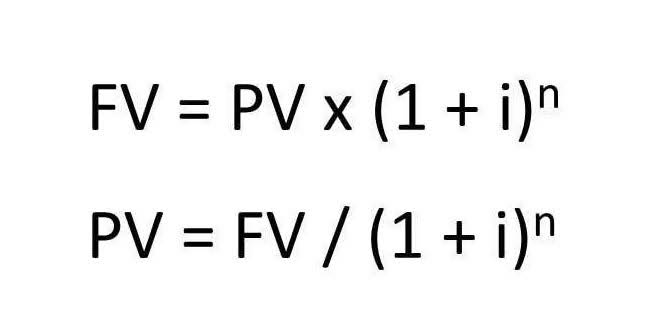Net Working Capital What Is It, Formula, How to Calculate

Suppose a company had the following operating working capital line items in 2021. The OWC of a company can be expressed as a percentage of sales to how to find change in working capital compare a company’s ratio to other companies within the same sector. My problem was that I was looking at the numbers too much without seeing the entire picture of cash flow. Surprising again because Wal-Mart has generally decreased its spending on inventory, except for 2017. For such a CapEx heavy business, they’ve improved the way their working capital is being used. Without showing you the numbers first, my initial guess is that because Microsoft is mainly a software business, their change in working capital should be positive.
Operating Assumptions
- For example, items such as marketable securities and short-term debt are not tied to operations and are included in investing and financing activities instead.
- This is the complete guide to understanding net working capital, calculating changes in working capital, and applying this to calculating Warren Buffett’s version of free cash flow, Owner Earnings.
- The math portion of this calculation remains very simple; the harder part is understanding where the numbers come from and why it is essential to focus on the change in working capital and interpret the result.
- Do your due diligence and verify that your business’s needs truly warrant these new expenses to avoid wasting working capital.
- Some seasonal businesses have different working capital behavior at certain periods.
- When a business uses cash to purchase new equipment, expand a building, or make another similar investment, its working capital decreases.
- At the same time, the accounts payable amounted to $1,067million and other non-interest bearing current liabilities of $702 million.
So, it’s essential for companies to take working capital management seriously when evaluating the short-term financial well-being of their business. It may take longer-term funds or assets to replenish the current asset shortfall because such losses in current assets reduce working capital below its desired level. The change of working capital formula and calculation will only take you so far, though. That means you must know the difference between positive and negative changes in working capital and what they mean for your company.

Current Assets
He has worked as an accountant and consultant for more than 25 years and has built financial models for all types of industries. He has been the CFO or controller of both small and medium sized companies and has run small businesses of his own. He has been a manager and an auditor with Deloitte, a big 4 accountancy firm, and holds a degree from Loughborough University. The formula to calculate the incremental change in net working capital (NWC) divides the change in net working capital (NWC) by the change in revenue. Taken together, this process represents the operating cycle (also called the cash conversion cycle). Suppose an appliance retailer mitigates these issues by paying for the inventory on credit (often necessary as the retailer only gets cash once it sells the inventory).

Still tracking cash flow in spreadsheets? You’re bleeding capital.

For example, imagine the appliance retailer ordered too much inventory – its cash will be tied up and unavailable for spending on other things (such as fixed assets and salaries). Moreover, it will need larger warehouses, will have to pay for unnecessary storage, and will have no space to house other inventory. In our example, if the retailer purchased the inventory on credit with 30-day terms, it had to put up the cash 33 days before it was collected. Here, the cash conversion cycle is 33 days, which is pretty straightforward. The above steps are commonly used by the management and stakeholders to calculate the value of net working capital equation. However, it is a very complex process, where the change in net working capital is more in case the company is bigger, covering a wider market and wide range of products and services.
Change in Working Capital: How to Measure It & Why You Should
Even a profitable business can face bankruptcy if it lacks the cash to pay its bills. For example, if a company has $1 million in cash from retained earnings and invests it all at once, it might not have enough current assets to cover its current liabilities. Another financial metric, the current ratio, measures the ratio of current assets to current liabilities.
How Tariffs Could Affect Your Business
- Another company successfully optimized its inventory by adopting a just-in-time inventory system, which reduced holding costs and ensured stock was available when needed without excess.
- Working capital is the difference between a company’s current assets and liabilities, while net working capital is the difference between current assets and current liabilities excluding short-term debt.
- If this company’s liabilities exceeded their assets, the working capital would be negative and therefore lack short-term liquidity for now.
- On the subject of modeling working capital in a financial model, the primary challenge is determining the operating drivers that must be attached to each working capital line item.
- Working capital represents the difference between a firm’s current assets and current liabilities.
- Non-cash working capital (NCWC) is the difference between current assets excluding cash and current liabilities.
For example, consider the following hypothetical excerpt from a company’s balance sheet. Founded in 1993, The Motley Fool is a financial services company dedicated to making the world smarter, happier, and richer. The Motley Fool reaches millions of people every month through our premium investing solutions, Bakery Accounting free guidance and market analysis on Fool.com, top-rated podcasts, and non-profit The Motley Fool Foundation. Looking ahead, we might see more companies adopting flexible supply chain strategies to deal with global disruptions. This means being ready to change plans quickly without messing up their working capital.
Payments

In simple terms, working capital is the net difference between a company’s current assets and current liabilities and reflects its liquidity (or the cash on hand under a hypothetical liquidation). Working capital serves as a measurement of a business’s short-term assets (including cash, inventory, and accounts receivable), minus its short-term liabilities (such as payroll, taxes, and accounts payable). Free cash flow (FCF) measures a business’s cash from operations minus its capital expenditures.
Calculate Working Capital for Each Period
Consequently a change in working capital is any net change in current assets and current liabilities over an accounting period. Both positive and negative changes in working unearned revenue capital will affect your business. This means it has a better ability to meet its short-term obligations, such as paying employees or suppliers or making loan repayments. The additional financial stability from a positive change in working capital can also give the company more funding for expansion efforts. Yes, working capital can be zero if a company’s current assets match its current liabilities.